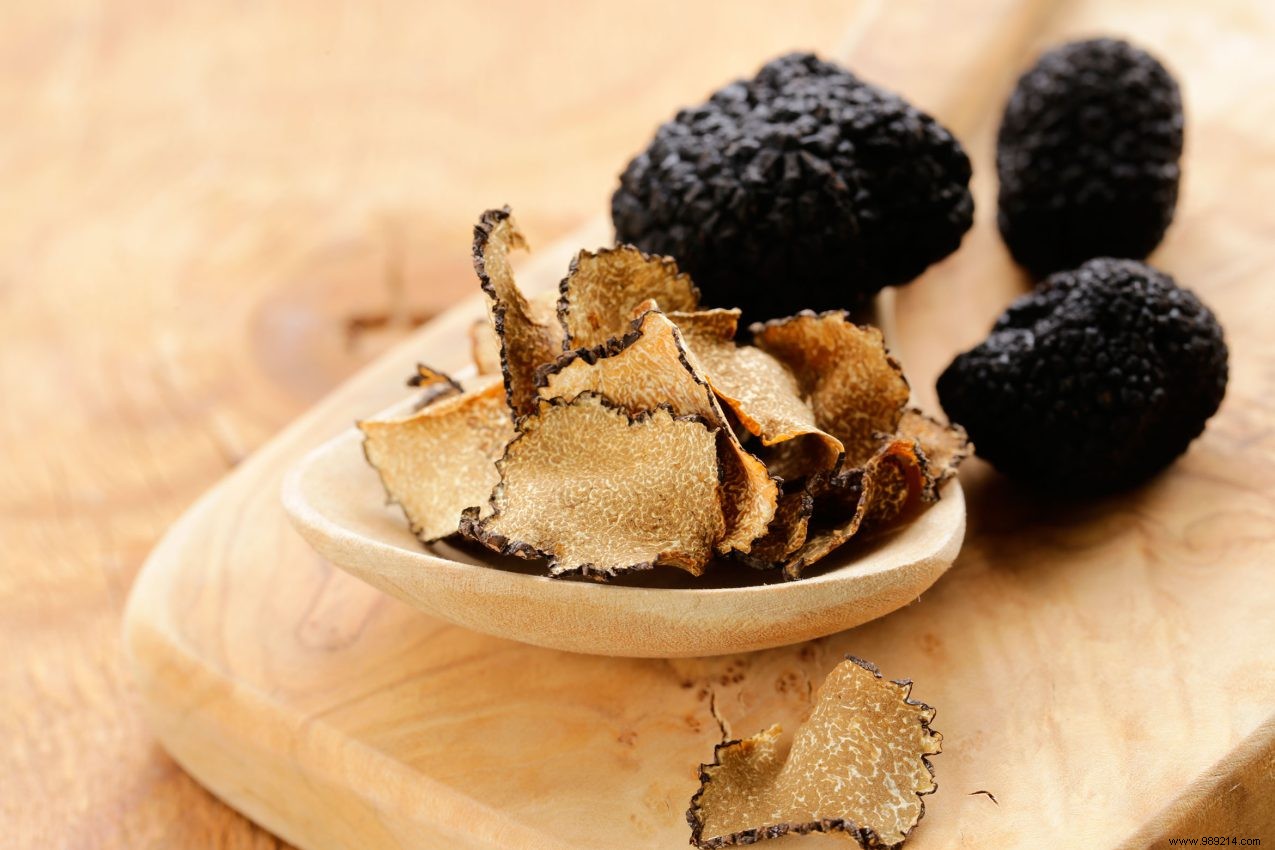
Did you already know this about truffles?
1. You need little truffle for a good taste
Truffles are valued by food lovers for their great smell and taste. Because of the intense taste you don't need a lot of truffle to be able to taste it well. That's good, because it does come with a price tag. Because they are common in France and Italy, they are most commonly used in the kitchens of those countries.
2. Truffles are mushrooms on trees
Truffles are fungi that grow underground on the roots of certain trees, almost exclusively in the wild and in calcareous soil. They are difficult for humans to find, but we can still enjoy them because of the good smell of dogs. Truffle seekers usually use a so-called “vanghino” or “vanghetto”, a small hoe with a wooden handle, to remove the truffles from the ground.
3. Black truffles vs. Summer truffles
Black truffles are dark brown with bumps and are ripe in winter. The best come from the Périgord or Quercy in France or from Umbria and Tuscany in Italy. They only grow under a few tree species, preferably under small holm oaks. The aroma is reminiscent of forest floor and moss with a hint of hazelnut and juniper. Summer truffles are also black with bumps and are harvested during the summer. The taste is similar to that of black truffles, but less pronounced.
4. There are also white truffles
White truffles are yellowish in color and somewhat resemble a potato. The German word Kartoffel is derived from the Italian tartufo (truffle). White truffles mainly grow in the Italian region of Piemonte. Due to their special aroma, they are the most sought after and the most expensive of all truffle varieties.
5. The origin of truffle in the kitchen
In Périgord en Quercy (France), locals add shredded raw truffles to beaten eggs, which they fry quickly over high heat. In Tuscany and Umbria, they slice pieces of truffle over pasta or risotto, which they serve with melted butter or grated Parmesan cheese. In the nineteenth century, French haute cuisine appropriated the truffle, such as scallops with truffle slices or quail breast with truffle sauce.
6. Truffle in your own kitchen
The taste of truffle comes into its own in relatively simple dishes. Pasta, potatoes and eggs – whether in the form of an omelette, deviled eggs or a luxury soufflé – absorb the taste very well. But truffle also goes well with steak. To let as many people as possible enjoy the unparalleled taste of truffle, truffle expert Oil &Vinegar an extensive range of truffle products:thin slices of summer truffle, olive oil with white or black truffle, truffle salsa, truffle powder, truffle salt, truffle cream and truffle sauce. Ideal for the holidays.
Text:Oil &Vinegar | Image:Shutterstock